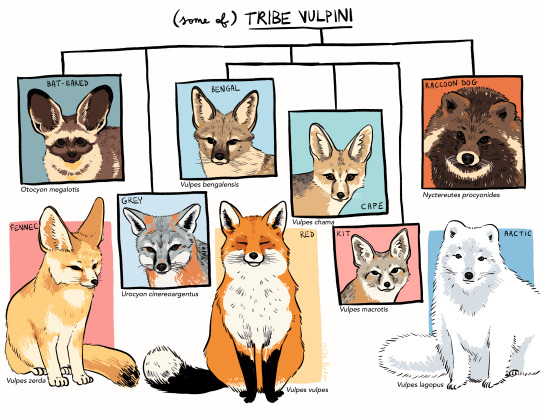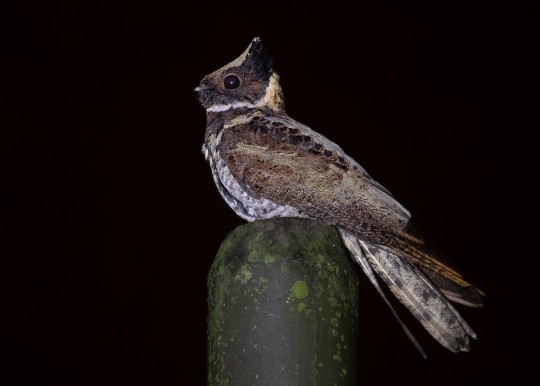#macrotis
Text


An endangered Greater bilby (Macrotis lagotis) runs happy and free in the feral predator-proof fenced area in Pilliga National Park, northern New South Wales, Australia. (Larger 1, 2).
#bilby#bilbies#greater bilby#macrotis#macrotis lagotis#marsupial#marsupials#animal#animals#national park#national parks#pilliga#new south wales#australia#run#running#nature
2K notes
·
View notes
Text

Greater Bilby (Macrotis lagotis), family Tylacomyidae, found in NW Australia
photograph by Bernard DuPont
246 notes
·
View notes
Note
Hi!!! 🥚 I offer since I really like the cool animal posts :^)


Bilby!
(Macrotis)
41 notes
·
View notes
Text

Greater Bilby
This illustration will be July's ko-fi Sticker Club design!
#art#my art#digital#digital art#clip studio#clip studio paint#csp#illustration#sticker club#bilby#greater bilby#Macrotis lagotis#marsupial#lazert#lazer-t
752 notes
·
View notes
Text




San Joaquin Kit Fox | Randy
161 notes
·
View notes
Text






More Magnificent Friends from the Frog Pond at Kubah National Park, Borneo!
Four-lined tree frog (Polypedates leucomystax), Giant River Frog (Limnonectes leporinus), Dark-eared Tree Frog (Polypedates macrotis), and File-eared Tree Frog (Polypedates otilophus)!
#frogs#animals#amphibians#Kubah National Park#Borneo#wch10#tree frogs#Four-lined tree frog#Giant River Frog#Dark-eared Tree Frog#File-eared Tree Frog#Polypedates leucomystax#Limnonectes leporinus#Polypedates macrotis#Polypedates otilophus
108 notes
·
View notes
Text












#poll#random polls#poll time#my polls#tumblr polls#polls#tumblr poll#fun polls#polls on tumblr#polls are fun#fox#canine#arctic fox#foxes#red fox#Bengal Fox#Vulpes bengalensis#Blanford's Fox#Vulpes cana#Cape Fox#Vulpes chama#Corsac Fox#Vulpes corsac#Tibetan Fox#Vulpes ferrilata#Arctic Fox#Vulpes lagopus#Kit Fox#Vulpes macrotis#Pale Fox
28 notes
·
View notes
Text
Great eared Nightjar (Lyncornis macrotis)

A tiny dragon man who owns us all
The Great-eared Nightjar is found in southwest India and parts of Southeast Asia. It is large for a nightjar, and shares its genus Lyncornis with the Malaysian-eared Nightjar. The etymology of this genus is Lunx/Lunkos for "lynx" and ornis for "bird". Macrotis comes from an Ancient Greek term for "long-eared'.
The wiki article for this bird is fairly thin, as it seems to be a typical nightjar and is likely not well studied due to its nocturnal habits. Nightjar are known for capturing insects while in flight, owing to their large, well-seeing eyes and their large gape.
Source:
Image Source: eBird - Qiang Zeng
19 notes
·
View notes
Text
Plate LXX of Lives of Game Animals by Ernest Thompson Seton in the coyote chapter of Volume 1 part 2
Scatology of Certain Candidate
The first page shows two sets of wolf scat (1/2 size), one set of coyote scat (1/2 size), two sets of kit fox scat (2/3 size), one set of grey fox scat (1/2 size), and three sets of red fox scat (two at 1/2 size and one at 1/4 size) drawn by E T Seton. The first wolf scat has a claw scratch next to it.
The second page contains the notes on the drawings:
"All but 4, 5, and 9 are about half natural size.
1. Wolf, very large. Banks of Athabaska River, Oct. 19, 1907. Chiefly of Rabbit fur. The scratch mark or signature was very plain.
2. Wolf. Algonquin Park, Ontario, Aug. 18, 1922. A solid mass of Deer hair.
3. Coyote. Philadelphia Zoo, Feb 7, 1924.
4. Kit-fox. Philadelphia Zoo, Feb 7, 1924.
5. Kit-fox. Philadelphia Zoo, Feb 7, 1924.
6. Gray-fox. Philadelphia Zoo, Feb 7, 1924.
7. Red-fox. Quebec, 40 miles east of Kippewa, Sept. 5, 1905. Composed almost entirely of Mouse fur, with some of Redsquirrel and Chipmunk.
8. Red-fox. Yellowstone Park, July 5, 1897. Chiefly of soft, dark fine fur, probably from Yellow Rockchuck.
9. English Red-fox. Essex, England, Jan. 21, 190y. Noted chiefly on account of the unmistakeable claw-mark signature."


#art#ernest thompson seton#lives of game animals#scatology#please nobody be mf weird about it being scat#red fox#vulpes vulpes#grey wolf#wolf#gray wolf#canis lupus#coyote#canis latrans#kit fox#vulpes macrotis#grey fox#urocyon cinereoargenteus#gray fox#english red fox#vulpes vulpes crucigera
0 notes
Note
opinion on nightjars?
Delightful magnificent effervescent resplendent!


Great-eared Nightjar (Lyncornis macrotis), family Caprimulgidae, order Caprimulgiformes, found in SE Asia
Photographs by FlyWithJenisha
1K notes
·
View notes
Photo

made a lil info sheet of foxes for a friend... better fox taxonomy under the cut if anyone is interested hehe (the grey fox is not part of tribe vulpini i just like them)
(secret third thing neither canini nor vulpini considered basal to all living canids)
Urocyon
U. cinereoargenteus, Grey Fox
U. littoralis, Island Fox (not pictured)
TRIBE VULPINI
Otocyon
O. megalotis, Bat-Eared Fox
Nyctereutes
N. procyonides, Raccoon Dog
N. viverrinus, Japanese Raccoon Dog (not pictured)
Vulpes (“True Foxes”)
V. zerda, Fennec Fox
V. bengalensis, Bengal Fox
V. vulpes, Red Fox
V. chama, Cape Fox
V. macrotis, Kit Fox
V. lagopus, Arctic Fox
V. cana, Blanford’s Fox (not pictured)
V. corsac, Corsac Fox (not pictured)
V. ferrilata, Tibetan Fox (not pictured)
V. pallida, Pale Fox (not pictured)
V. rueppellii, Rüppel’s fox (not pictured)
V. velox, Swift Fox (not pictured)
4K notes
·
View notes
Text

The great eared nightjar (Lyncornis macrotis) is a species of nightjar in the family Caprimulgidae. It is found in southwest India and in parts of Southeast Asia. This very large nightjar has long barred wings, a barred tail and long ear-tufts which are often recumbent. Wikipedia
129 notes
·
View notes
Text
The Vulpes genus has 12 extant (still living) foxes and 2 (that I know of) extinct (not living) foxes.
The Vulpes genus is considered to be the "true foxes". Other genuses are closer to wolves, jackals, and other canines, but are still commonly referred to as foxes.
- Vulpes vulpes | Red Fox
- has multiple subspecies
- Vulpes lagopus | Arctic Fox
- Vulpes zerda | Fennec Fox
- Vulpes macrotis | Kit Fox
- Vulpes macrotis mutica | San Joaquin Kit
- Vulpes velox | Swift Fox
- Vulpes ferrilata | Tibetan Fox
- Vulpes corsac | Corsac Fox
- Vulpes rueppellii | Rüppell’s Fox
- Vulpes bengalensis | Bengal Fox
- Vulpes cana | Blanford’s Fox
- Vulpes chama | Cape Fox
- Vulpes pallida | Pale Fox
- Vulpes skinneri | extinct fox
- Vulpes riffautae | extinct fox
40 notes
·
View notes
Note
great eared nightjar ? (dragon bird)
Great Eared-Nightjar Lyncornis macrotis

© Ayuwat Jearwattanakanok
64 notes
·
View notes
Text

July Sticker Club design: Greater Bilby!
Join before August 1st to get this design!
By joining my sticker club for $15 a month, each month you will receive:
x1 Standard Vinyl Sticker (5.5 x 7cm)
x1 Large Vinyl Sticker (11 x 13.5cm) (Sticker Club Exclusive)
x1 Standard Vinyl Glow in the Dark Sticker (5.5 x 7cm) (Sticker Club Exclusive)
x1 Large Vinyl Glow in the Dark Sticker (11 x 13.5cm) (Sticker Club Exclusive)
x1 Mini Print (14 x 15.5cm) printed on coloured card + signed on the back
x1 Single-use Code for 10% off your next BigCartel store order
A hand-written thank you note from me
x1 Random mystery sticker from my store!
The design of the stickers and print will be a different animal each month!

More info below the cut:
Comes with standard untracked shipping included.
You can join and quit my Sticker Club membership whenever you like. If you are a continuous subscriber, your rewards for each subsequent month will be dispatched 1-3 days after your billing date (approximately the same date as the one you joined each month).
I also have a 1$+ tier available on my ko-fi with no specific rewards, for anyone who would like to support me otherwise.
If you would prefer just the standard sticker without the subscription, it can be bought individually through my store here.


Large and glow-in-the dark stickers of this design remain exclusive to the Sticker Club and will be unavailable after July 31st.
August 2024's design will be revealed later this month.
#sticker club#stickers#stickers for sale#glow in the dark stickers#bilby#greater bilby#Macrotis lagotis#ko-fi#kofi#kofi membership#lazert#lazer-t#self promotion#announcement
96 notes
·
View notes
Text

Tufted Ground Squirrel (Rheithrosciurus macrotis)
Habitat & Distribution
Resides only in lowland tropical forests; occasionally ventures into orchards
Found on the island of Borneo
Physical Description
Weight: 1–2 kg (2.2–4.4 lb)
Length: 63.4–69.4 cm (25–27.4 in)
Tufted grown squirrels are generally brown with reddish tints; they have a white stripe running down the sides of their bodies, and long tufts on their ears
The tail is extraordinarily large and fluffy, and adults have long, grooved inscisors
Behaviour
The tufted ground squirrel forages both on the ground and in trees; its diet include nuts, seeds, and fruit
Potential predators include mustelids, birds of prey, and clouded leopards
Key Advantages
The tufted ground squirrel's large inscisors are mainly used for cracking hard nuts, but have often been rumoured to be used to hunt deer
Its large tail is thought to disorient potential predators
See where they stand in the May Mammal Madness Tournament here!
Photo by James Armstrong
62 notes
·
View notes